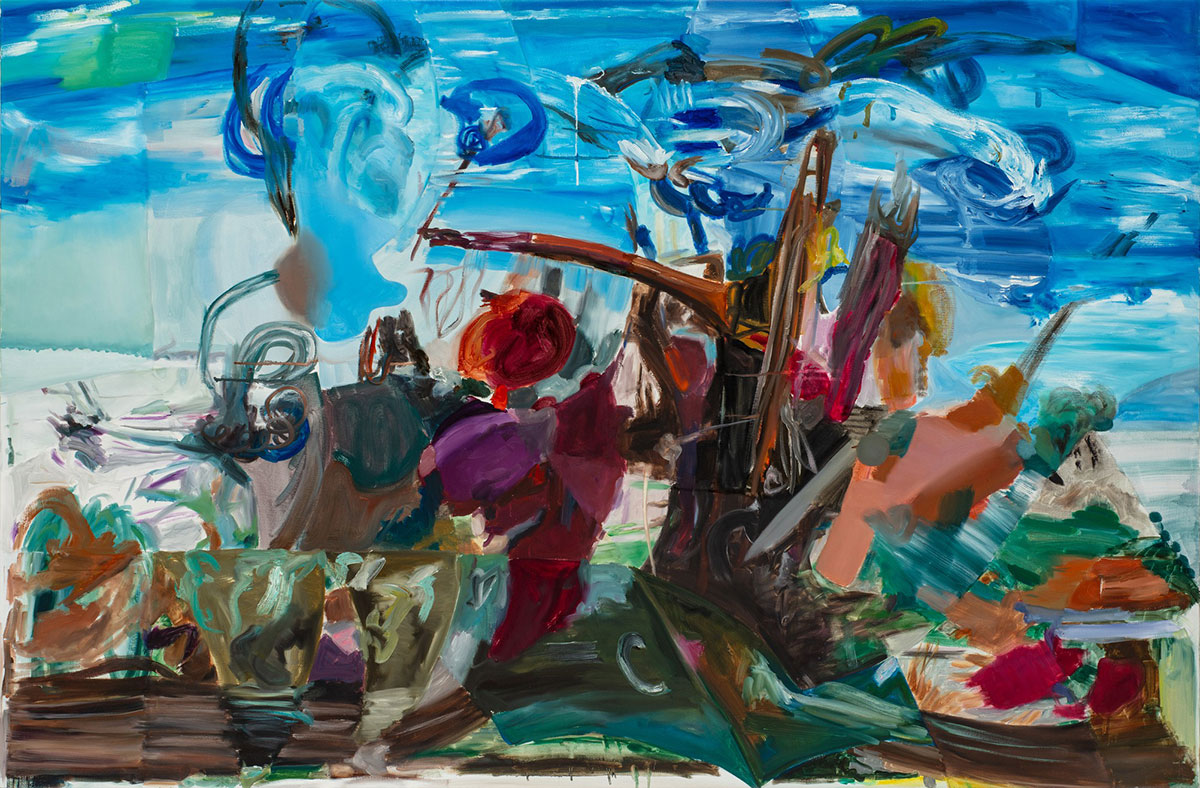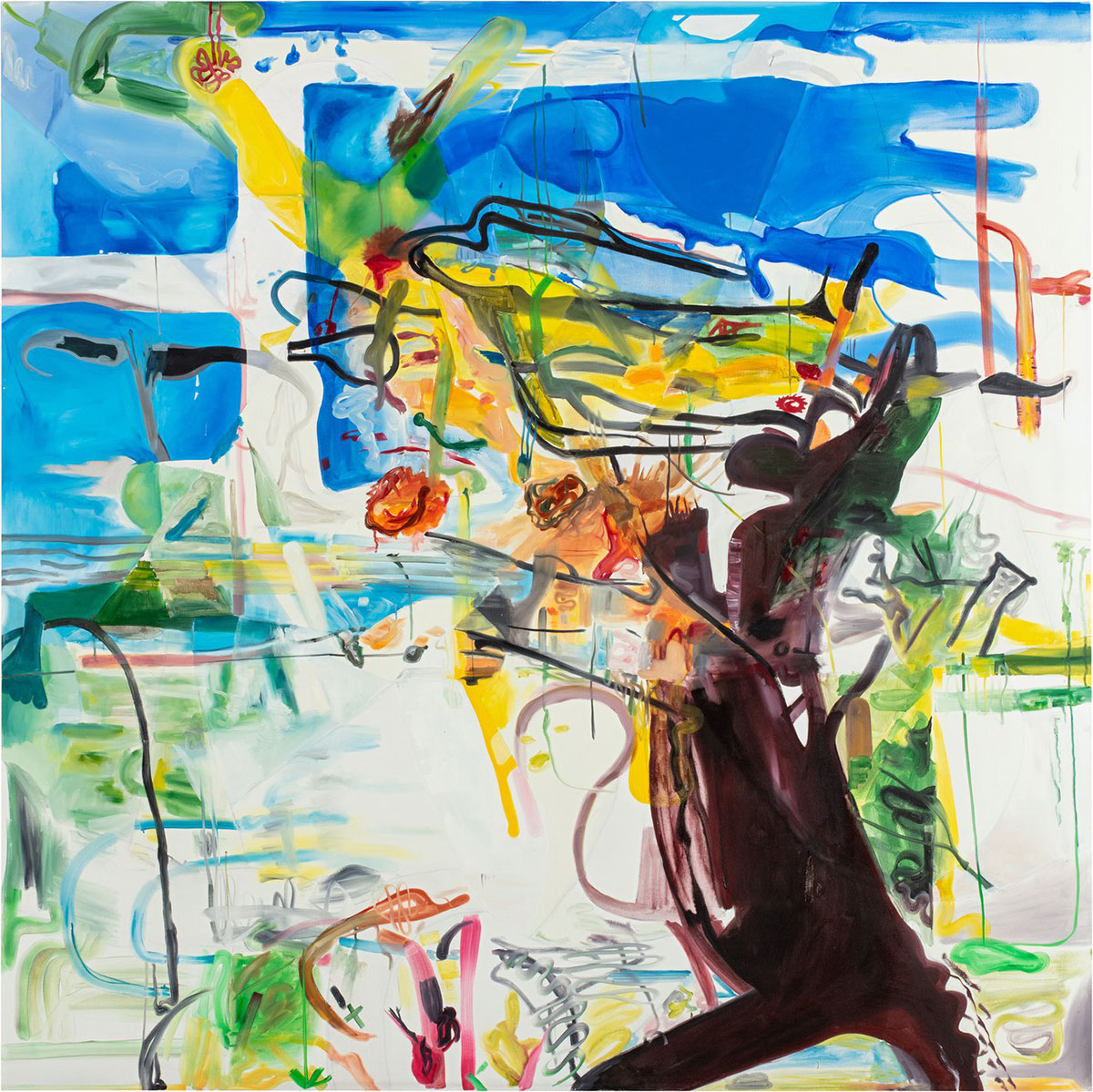PRESENTATION: Albert Oehlen-New Paintings
 Albert Oehlen has been a key figure in contemporary art since the 1980s. By bringing together abstract, figurative, collaged and computer-generated elements on the canvas, he continues to explore an inventive diversity of artistic approaches. Through Expressionist brushwork, Surrealist gestures and deliberate amateurism, Oehlen engages with the history of painting, pushing its essential components of color, gesture, motion and time to bold new extremes.
Albert Oehlen has been a key figure in contemporary art since the 1980s. By bringing together abstract, figurative, collaged and computer-generated elements on the canvas, he continues to explore an inventive diversity of artistic approaches. Through Expressionist brushwork, Surrealist gestures and deliberate amateurism, Oehlen engages with the history of painting, pushing its essential components of color, gesture, motion and time to bold new extremes.
By Dimitris Lempesis
Photo: Gagosian Archive
Albert Oehlen in his solo exhibition “New Paintings” continues to explore the rich possibilities and the future of painting. He riffs on fragments, forms, and entire motifs of his imagination in a manner that echoes both the sampling of a musical composition and the mechanisms of cinematography. These references are the vehicles for vivid painterly invention. Oehlen’s images are divided, repeated, and distorted to conjure a new pictorial narrative. His original source is reimagined; it is at times decipherable, and at others annihilated. The subject of these paintings is, arguably, unimportant; it is the act of transferring images into a new state that is now significant. The result is sometimes a regular, repeated composition that follows from one section to the next. Yet in other paintings, he chooses much more irregular twists and turns, filled with different possible shapes and endings. There is no barrier between abstraction and figuration, improvisation and control, only the endless potential of the medium. Oehlen is best known for using various modes of painting within the same canvas to disrupt the histories and conventions of modernism. Championing self-consciously amateurish “bad” painting, he infuses spontaneous and expressive gestures with Surrealist attitude, rejecting the quest for stable form and meaning. Combining graphic brushstrokes, painterly drips, unexpected colors, and contrasting textures, Oehlen tests the limits of both coherence and legibility. Albert Oehlen studied at the Hochschule für bildende Künste Hamburg in Germany from 1978 to 1981 and quickly rose to prominence in the Berlin and Cologne art scenes. He came to be associated with the Junge Wilde artists, including Martin Kippenberger and Werner Büttner, who sought to create work that defied categorization and refuted the artistic status quo. Straddling various debates surrounding the nature of painting, Oehlen’s work deconstructed the medium to its constituent elements (color, gesture, motion, and time) and evolved out of constraints he applied to his artistic process. This line of investigation, which Oehlen has continued to pursue in the decades since has resulted in striking variations between—from works that combine abstract and figurative styles, created in response to the Neo-Expressionism of the 1980s, to paintings comprising of grids of colored squares. As Oehlen began to incorporate new technologies into his work—inkjet printers, computer-aided design programs, and references to the pixelated lines of computer screens—the parameters that he set for himself shifted, offering new obstacles and challenges. Some of these self-imposed “rules” include limiting his palette and combining perambulating black lines with carefully blended gradations in the “Baumbilder” series and utilizing erasure and layering to juxtapose bright and muddy colors, as in the “Elevator Paintings”, a single work in nine parts from 2016. In the late 1990s, Oehlen spray-painted over collaged imagery that had been transferred to canvas with large, industrial printers typically used to create billboards. Oehlen is perhaps best known for his embrace of “bad” painting. Alongside his many rules, he allows a certain awkwardness or ugliness to enter his work, introducing unsettling gestures, crudely drawn figures, visceral smears of artificial pigments, bold hues, and flesh tones. In this way, he attests to the infinite combinations of form made possible through painting, and shows that these combinations can be manipulated at the artist’s will to produce novel perceptual challenges for the viewer.
Photo: Albert Oehlen, Untitled, 2023 Oil on canvas, 49 ¼ × 74 ⅞ inches (125 × 190 cm), © Albert Oehlen. Photo: Stefan Rohner, Courtesy the artist and Gagosian
Info: Gagosian Gallery, 20 Grosvenor Hill, London, United Kingdom, Duration: 21/3-11/5/2024, Days & Hours: Tue-Sat 10:00-18:00, https://gagosian.com/

Right: Albert Oehlen, Untitled, 2024 Oil on canvas, 106 ⅜ × 82 ¾ inches (270 × 210 cm), © Albert Oehlen. Photo: Stefan Rohner, Courtesy the artist and Gagosian


